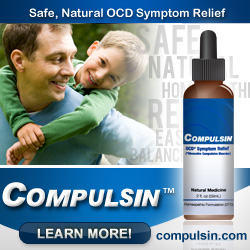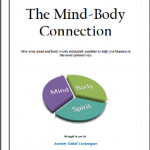Many people joke about having OCD, but it is not a laughing matter. Those diagnosed with obsessive compulsive disorder (OCD) have fears and thoughts that may be unreasonable (the obsession), that lead to rituals or repetitive behaviors (the compulsion).

There are 3 types of OCD spectrum disorders.
A person may still have OCD if only obsessions or only compulsions are present. They may or may not have awareness that their obsessions aren’t reasonable. Trying to stop or ignore them tends to only heighten their anxiety levels, until they feel compelled to complete the compulsive act as an effort to ease the feelings of stress that it causes.
Approximately 2.2 million American men and women are affected by OCD. One-third of OCD-afflicted adults had symptoms as children. Onset usually occurs in childhood, during the teen years, or in the early years of adulthood, with most people getting a diagnosis by the time they are around age 19.
Symptoms sometimes come and go, lessening or worsening over time. When symptoms are severe, a person may not be able to work or function at home. Sometimes people with OCD turn to alcohol or drugs or eating disorders and there can be other co-existing anxiety disorders and depression.
Treatment is usually with psychotherapy and/or medication. One very useful type of psychotherapy is called cognitive behavioral therapy, which teaches alternative ways of thinking, behaving and responding to situations so that the person can lessen anxious or fearful thoughts and avoid acting compulsively.
Another therapy called exposure and response prevention helps reduce the compulsive tendencies of OCD.
Fears – The Obsessions
There are some typical, common themes around which OCD centers, such as fear of germ contamination, or fear of intruders.
- An obsession about germs may cause a person to begin a compulsion of repetitive hand washing, even to the point of making their hands raw, chapped and bleeding.
- An obsession centering on intruders may initiate a compulsion to lock and relock doors or continually check the locks on doors.
- There may be distress involving throwing out unneeded items, so hoarding develops.
Rituals – The Compulsion
Rituals often revolve around a compulsion to count or touch items in a particular order, or arrange items a certain way, to silently repeat words, or check things (the stove, for instance).
Normal, healthy individuals also perform some rituals such as going back several times to make sure they locked the front door or checking to make sure the stove has been turned off before they leave their house.
The difference is that a person who has OCD will perform his or her rituals even when doing so significantly disrupts their daily life, and they can be greatly distressed by the compulsion to continuously do these repetitive acts. Most people who have OCD are aware that their repetitive actions or thoughts are senseless, although some adults and most children may have little or no awareness that their behavior is not normal.
It is not well-understood why some people get OCD and others do not. At times, OCD runs in families.
Fear and anxiety are located in several parts of the brain. As we learn more, and better understand the role that environment and stress factors play, scientists may be able to come up with better treatment for the condition.
Affiliate Disclosure
My website contains affiliate links, which means if you purchase any products mentioned in my articles, I may receive a commission. If you do, thank you!







Speak Your Mind